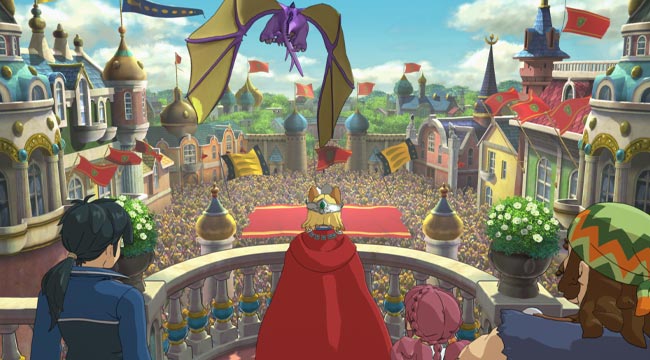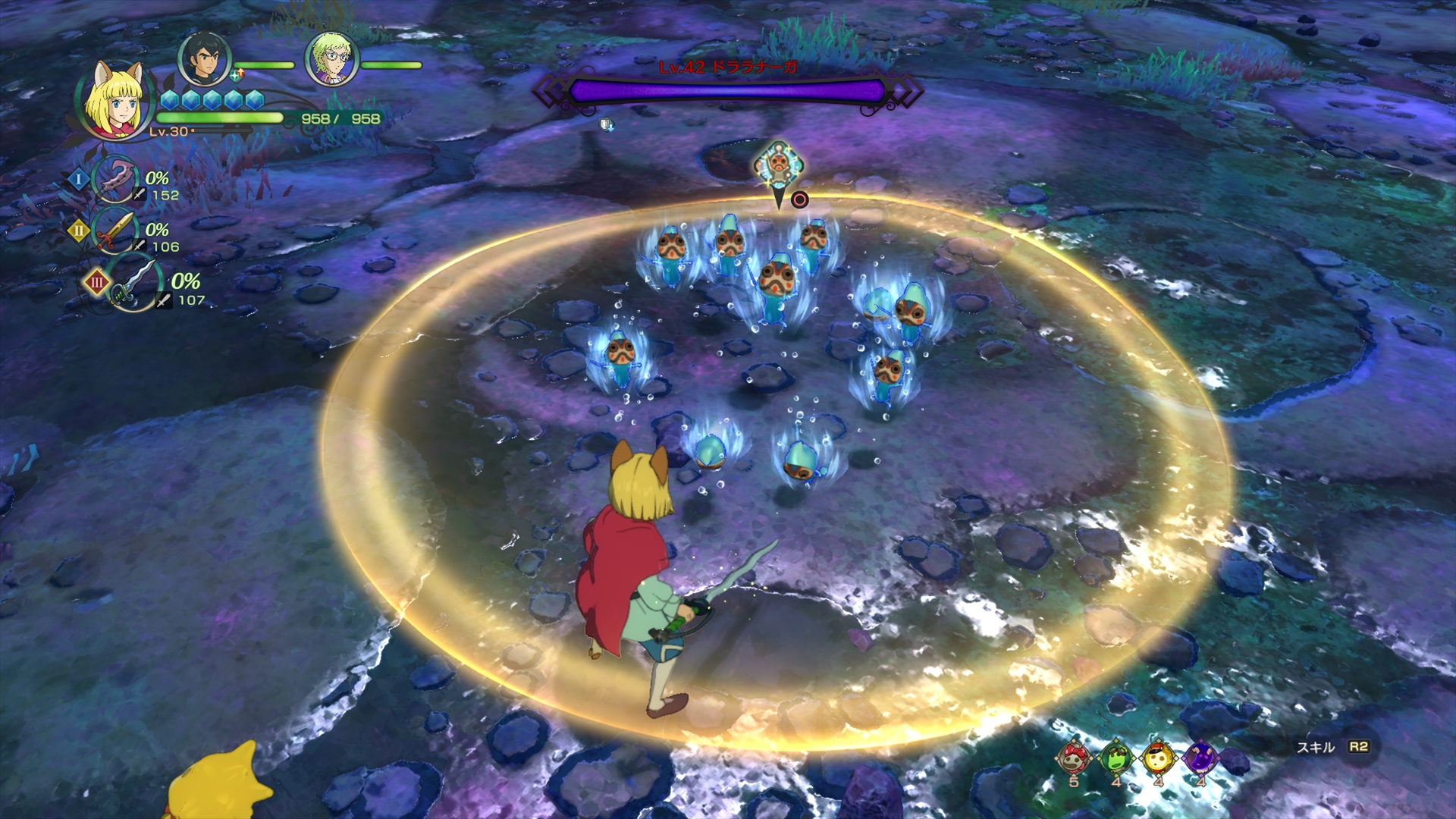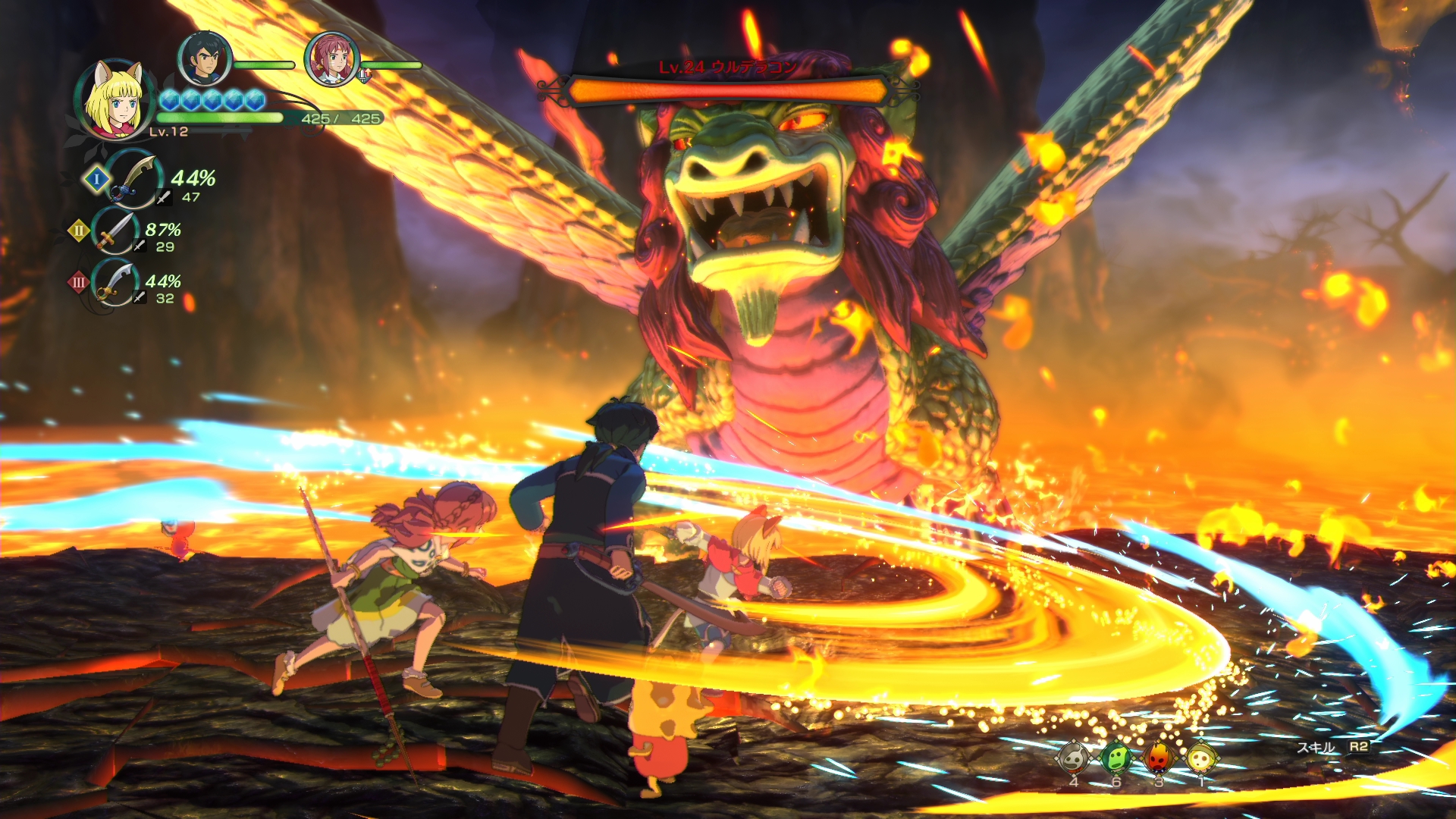
Ni No Kuni: Wrath of the White Witch was one of 2013’s most delightful games. Bolstered by the near-flawless pedigree of developer Level 5 and the unbridled creativity of Studio Ghibli’s art, it became one of the highest-selling PS3 games to date. The follow-up is equally ambitious and sets out to redefine the JRPG genre as a streamlined experience while embracing long-held tropes of the genre.
All of the major players from the creation of Wrath of the White Witch return. Ghibli animator and character designer Yoshiyuki Momose’s work is a breathtaking cartoon come to life, and is a sight to behold running at a high framerate. For years gaming was chasing after a high bar. Combat and traversing the world feels like you truly are in the shoes of a Ghibli character, working to regain your kingdom. Combine the beautiful character design with the swelling score of Joe Hisaishi, who composed the score of Wrath of the White Witch and nearly every single Miyazaki film, and few presentations are better.
As King Evan of Ding Dong Dell, you visit a somewhat-familiar world that references the previous game’s setting and lore, while being completely fresh and new. The Pokemon-like Familiars from the previous game are gone, and now there’s a real-time combat system that encourages timing and quick reflexes not unlike Zelda: Breath of the Wild. For the most part, all traditional menu management usually found in a turn-based game are removed from Ni No Kuni 2, but you’ll still have to navigate often for heals and buffs.
Replacing the Familiars as the legally-mandated Ghibli Cuteness are Higgledies. They’ll passively work on the battlefield in your favor, opening up zones for your character to hop into, which will lead to buffs, heals, or straight attacks on your enemy. Combined with your three active player characters, the Higgledies add depth to the combat while not being cumbersome. You can upgrade, micromanage, “cook” new Higgledies in your kingdom, which is where the depth of the game truly lies.

There’s a moment roughly 10 hours into Ni No Kuni 2 when there almost seems like there’s too much to do, in a good way. Growing your kingdom is the most in-depth system in the game, and the act of running your citizens and their shops, emptying your coffers, visiting stores for new gear and working with your citizens in order to keep them in the correct businesses is where you’ll spend much of your time. As the game goes on and your kingdom expands, your citizenry will grow into an overwhelming amount of micromanagement that replaces other, somewhat-tedious regularities in JRPGs. Instead of grinding for gold and items, you’ll have them delivered to you through your citizens (you can also go out and hunt and grind), but for the most part, the big money will come from sidequests deep into the game and your rapidly-filling coffers.
It’s this distillation of Japanese RPG systems that makes the game so refreshing while maintaining a deep and satisfying building of your team, which is the most important part of an RPG. You’ll never be out of tasks, or something or someone to check on, and at times it can be frustrating. You can get caught up in a few sidequests, only to know that it’s time to head back to check on your people and do chores. After every visit, however, you’ll feel stronger and learn more about your collection of followers.
But for how dense and rich the game is, it still has its flaws. The menus that you absolutely must go through in your city have short animations that can’t be skipped, which can drive anyone mad when your kingdom is dozens of businesses deep. Sometimes the game can feel more Sim City than JRPG with the micromanagement. Still, sidequests actually feel rewarding thanks to the Kingdom building, placing the correct characters you recruit through the game to bolster your influence and powers is greatly satisfying and feels like a new-age Suikoden or even a Chrono Cross that doesn’t keep your peripheral characters idle.
There’s almost too much to do.
The camera also leaves something to be desired. The beauty of the game is undeniable, but the auto-adjusting camera sometimes sticks you behind Evan at the worst times, making a jump or turn of a corner a stuttering mess. It’s one of the only visual flaws. Speaking of visuals, here’s another reminder of how every still frame looks like a painting. Absolutely gorgeous.

Sadly, the plot doesn’t start moving until you’re dozens of hours into the game and even then, it’s relatively bare-bones compared to Level-5’s previous work, including the original Ni No Kuni. The lack of voice acting is also an unfortunate byproduct of being localized across the world. Only small snippets of the cutscenes are voiced, leaving the impact of walking around a living, breathing Ghibli world slightly less engrossing.
Still, if you’re itching for the best JRPG since Persona 5 or even Final Fantasy 15, this is for you. Ni No Kuni 2 is everything a fan of the genre wants and then some. You’ll be able to take time leading small armies into battle, go on traditional adventures, and take part in a layered experience that feels like the second step in what will be a grand series that’s only beginning to find itself.
